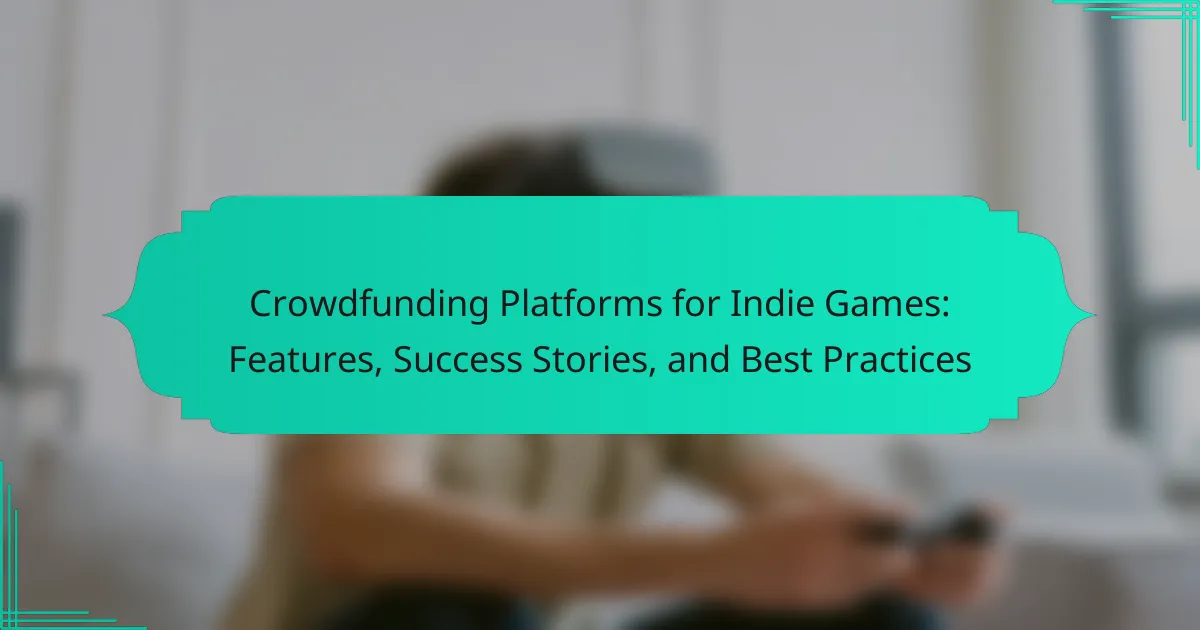Crowdfunding platforms for indie games offer essential features that enhance project visibility and success. This article explores key attributes of these platforms, highlights successful campaigns, and outlines best practices for effective crowdfunding. Learn how to engage communities, set realistic funding goals, and create compelling narratives to maximize your project’s potential.
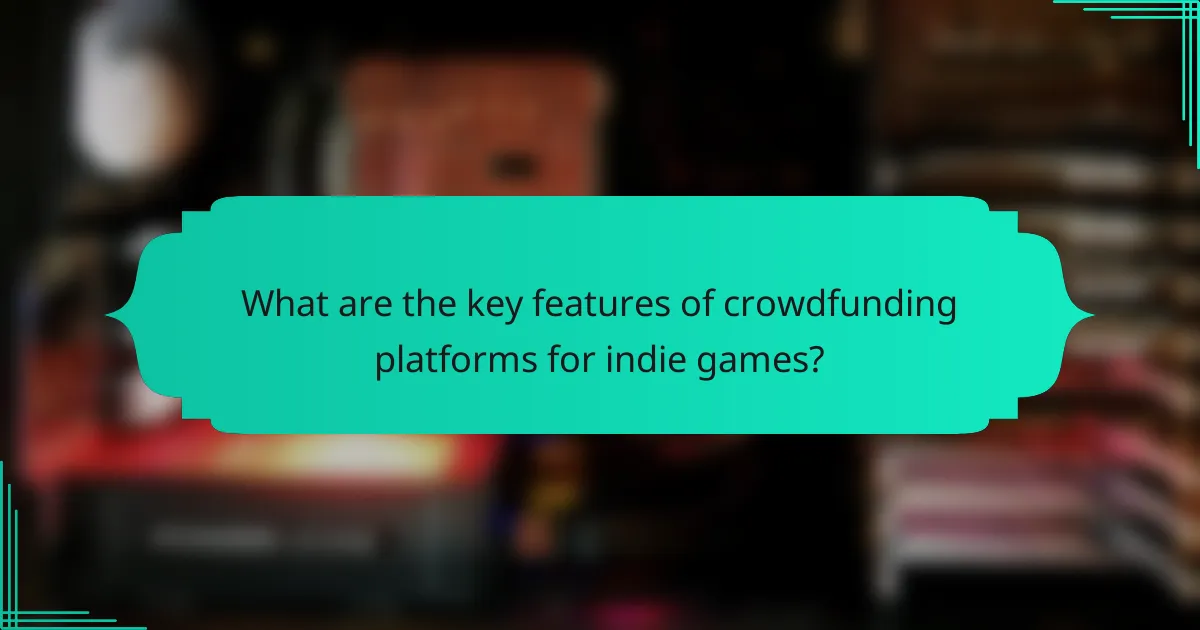
What are the key features of crowdfunding platforms for indie games?
Crowdfunding platforms for indie games feature user-friendly interfaces, community engagement tools, flexible funding options, and marketing support. These elements enhance visibility and promote project success. Platforms like Kickstarter and Indiegogo exemplify these features with successful campaigns.
How do funding models vary across different platforms?
Funding models across crowdfunding platforms for indie games vary significantly. Some platforms offer all-or-nothing funding, while others allow flexible funding options. For instance, Kickstarter typically requires projects to meet their funding goal to receive any money, promoting urgency. In contrast, Indiegogo allows creators to keep funds raised even if they fall short of their target. Additionally, platforms may charge different fees, impacting the net amount received by creators. These variations can influence project strategies and success rates.
What role does community engagement play in successful campaigns?
Community engagement is crucial for successful crowdfunding campaigns in indie games. It fosters trust and encourages backers to invest. Engaged communities provide valuable feedback, increase visibility, and create a sense of ownership among supporters. Successful campaigns often leverage social media and forums to build relationships, share updates, and celebrate milestones. This interaction enhances the campaign’s credibility and can lead to higher funding levels.
Which platform tools enhance project visibility and outreach?
Crowdfunding platforms enhance project visibility and outreach through features like social sharing, community engagement, and targeted marketing tools. Platforms such as Kickstarter and Indiegogo offer built-in promotional options, allowing creators to reach wider audiences. Effective use of these tools can significantly increase funding success rates. Additionally, success stories from previous campaigns exemplify the potential impact of utilizing these features effectively.
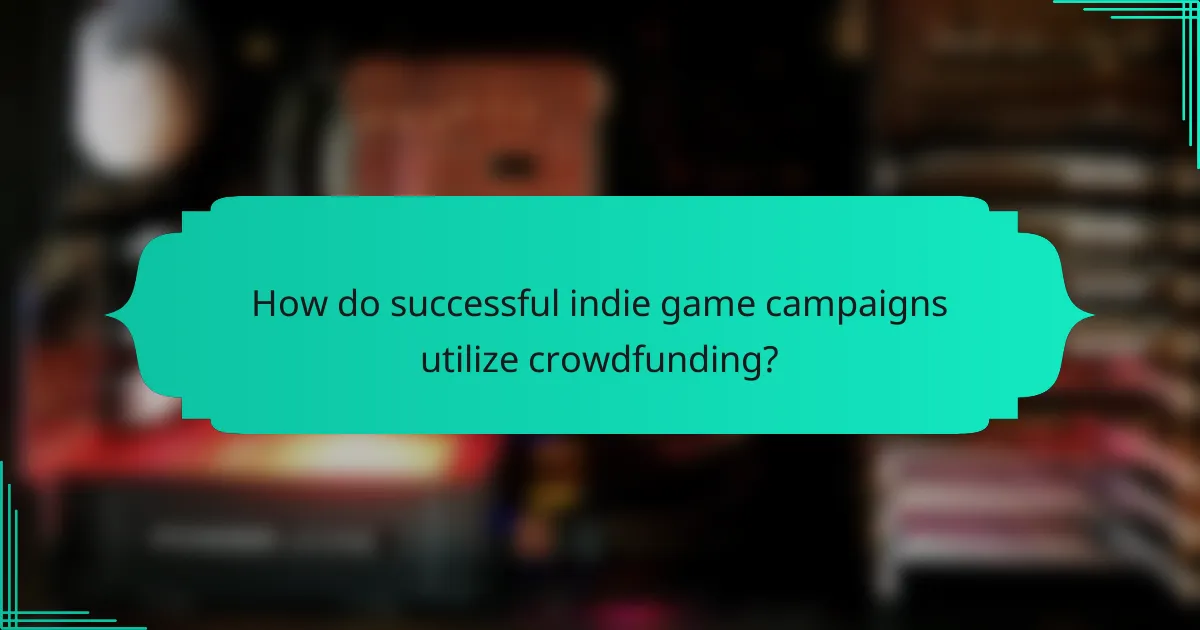
How do successful indie game campaigns utilize crowdfunding?
Successful indie game campaigns leverage crowdfunding by engaging communities, offering unique rewards, and showcasing compelling narratives. They often utilize platforms like Kickstarter and Indiegogo, which provide features tailored for creators. Success stories often highlight campaigns that exceeded funding goals through early engagement and transparent communication. Best practices include setting realistic funding targets, creating engaging promotional materials, and maintaining consistent updates throughout the campaign. These strategies enhance visibility and foster trust, leading to higher chances of success.
What are notable success stories from indie game developers?
Notable success stories from indie game developers include “Undertale,” which raised over $50,000 on Kickstarter, and “Hollow Knight,” funded through a successful crowdfunding campaign that generated $57,000. “Stardew Valley” is another example, with a single developer creating a game that sold over 10 million copies. These stories highlight the potential of crowdfunding platforms to launch successful indie games.
Which strategies contributed to their crowdfunding achievements?
Successful crowdfunding for indie games often relies on targeted strategies. Key strategies include engaging storytelling, leveraging social media, and building a community around the game.
Engaging storytelling captivates potential backers by showcasing the game’s unique concept and vision. Social media platforms amplify outreach, creating buzz and attracting a wider audience. Community engagement fosters loyalty and encourages word-of-mouth promotion.
Additionally, offering compelling rewards and stretch goals can incentivize contributions, enhancing the overall funding experience. These strategies collectively contribute to successful crowdfunding campaigns for indie games.
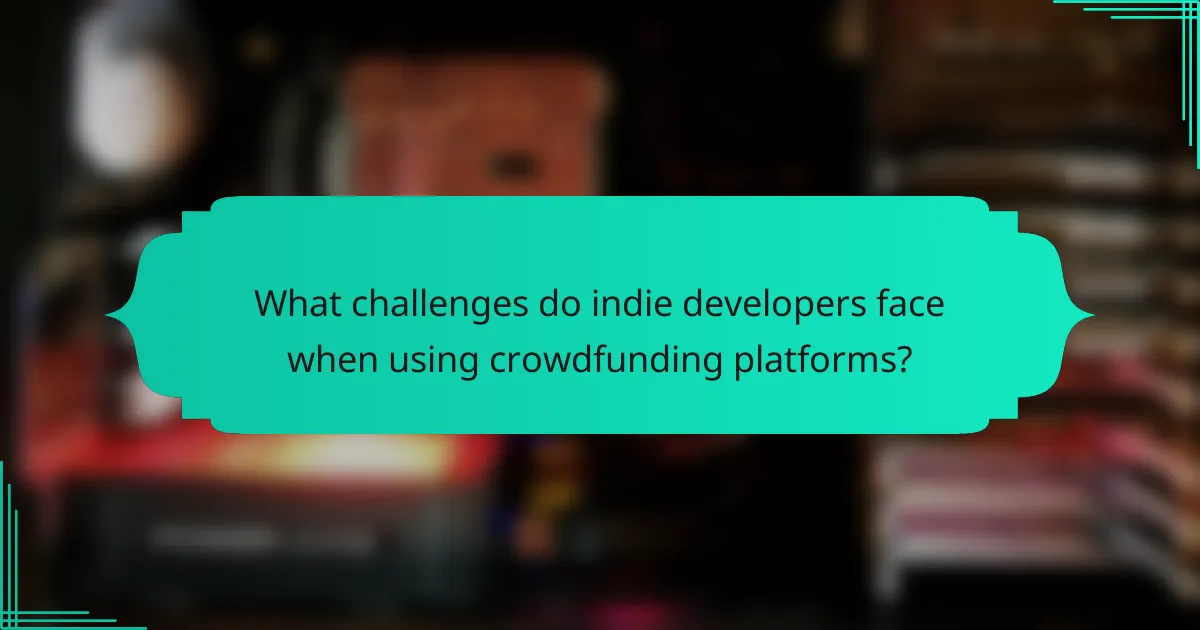
What challenges do indie developers face when using crowdfunding platforms?
Indie developers face several challenges when using crowdfunding platforms, including visibility, funding goals, and community engagement. Limited marketing resources often hinder their ability to stand out among numerous projects. Additionally, setting realistic funding goals can be difficult, as overestimating can lead to project failure. Building and maintaining a supportive community is crucial but can be time-consuming and requires ongoing effort. Lastly, managing rewards and fulfilling backer expectations adds complexity to the development process.
How do platform fees impact project funding?
Platform fees can significantly reduce the total funding received by indie game projects. These fees typically range from 5% to 10% of the total funds raised, directly impacting the amount available for game development. For instance, a project that raises $50,000 could lose up to $5,000 to fees, affecting budget allocation. Additionally, higher fees may deter potential backers, reducing overall support for projects. Understanding these costs is essential for creators to set realistic funding goals and maximize their funding potential.
What common pitfalls should developers avoid during campaigns?
Developers should avoid common pitfalls such as inadequate planning, neglecting marketing, and failing to engage with backers. Properly defining goals and maintaining communication is crucial for success. Additionally, overlooking budget management can lead to funding shortfalls. Not showcasing gameplay or project updates can diminish backer interest.
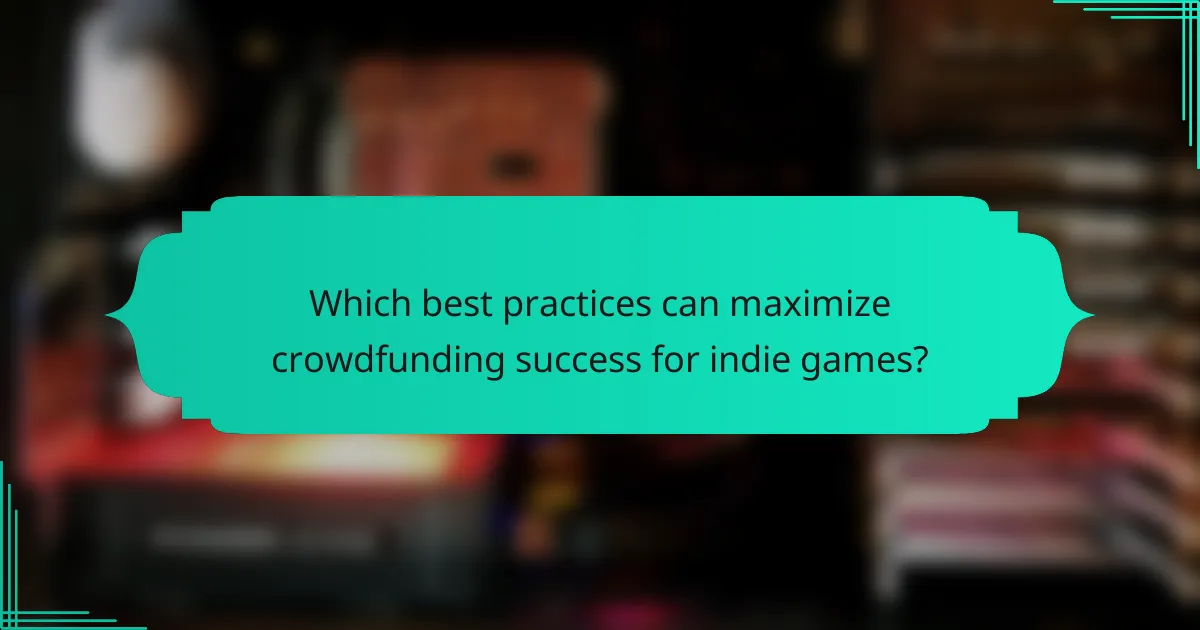
Which best practices can maximize crowdfunding success for indie games?
To maximize crowdfunding success for indie games, focus on clear communication, engaging visuals, and a compelling narrative. Building a community early enhances support and trust.
1. Set realistic funding goals to attract backers.
2. Offer attractive rewards that resonate with your target audience.
3. Utilize social media for outreach and updates.
4. Create a captivating video pitch that showcases your game.
5. Engage with backers through regular updates and feedback.
These practices foster a strong connection with potential supporters, increasing the likelihood of reaching funding targets.
How important is a compelling pitch video for engaging backers?
A compelling pitch video is crucial for engaging backers in crowdfunding for indie games. It visually communicates the project’s vision, showcases gameplay, and builds emotional connections. Successful campaigns often feature high-quality videos that highlight unique attributes, such as innovative mechanics or art styles, which can significantly enhance funding potential. Research shows that campaigns with engaging videos raise 50% more funds on average than those without. Therefore, investing time and resources in a well-crafted pitch video is essential for success in the competitive crowdfunding landscape.
What role do stretch goals play in sustaining momentum?
Stretch goals significantly enhance momentum in crowdfunding for indie games by creating excitement and encouraging backer engagement. They motivate creators to exceed initial targets, fostering a sense of community and shared achievement. This approach can lead to increased funding and visibility, ultimately contributing to a project’s success. By setting ambitious yet attainable stretch goals, indie game developers can maintain enthusiasm and attract new supporters throughout the campaign.
What are expert tips for maintaining communication with backers?
To maintain communication with backers, prioritize transparency and regular updates. Share project milestones, setbacks, and insights to build trust. Utilize various channels like newsletters and social media to keep backers engaged. Encourage feedback and respond promptly to foster a sense of community.
How can developers leverage social media to boost campaign performance?
Developers can leverage social media to enhance crowdfunding campaigns by engaging with audiences, sharing updates, and building community. Platforms like Twitter and Instagram allow for real-time interaction, fostering a sense of involvement. Consistent content showcasing game development progress can attract backers. Success stories highlight the effectiveness of social media; for instance, projects that utilized targeted ads on Facebook saw a 30% increase in funding. Best practices include using visuals, engaging storytelling, and responding promptly to inquiries, which collectively strengthen campaign performance.
What are the most effective ways to reward backers?
Offering rewards such as exclusive in-game content, physical merchandise, and personalized experiences effectively engages backers. These incentives enhance their connection to the project and encourage higher contributions.
1. Exclusive in-game content: Unique items or features available only to backers.
2. Physical merchandise: T-shirts, posters, or art books that promote the game.
3. Personalized experiences: Opportunities for backers to interact with developers or influence game design.
4. Early access: Allowing backers to play the game before its official release.
5. Recognition: Listing backers’ names in credits or on the website to acknowledge their support.
6. Tiered rewards: Offering varying levels of rewards based on contribution amounts to incentivize larger donations.
What are common mistakes to avoid in crowdfunding campaigns?
Common mistakes in crowdfunding campaigns include setting unrealistic funding goals, neglecting marketing efforts, and failing to engage backers. These errors can hinder success and diminish trust.
Clear communication is essential; many campaigns overlook updates and transparency. Additionally, not having a well-defined target audience can lead to wasted resources. Lastly, ignoring feedback from backers can limit growth and improvement opportunities.
